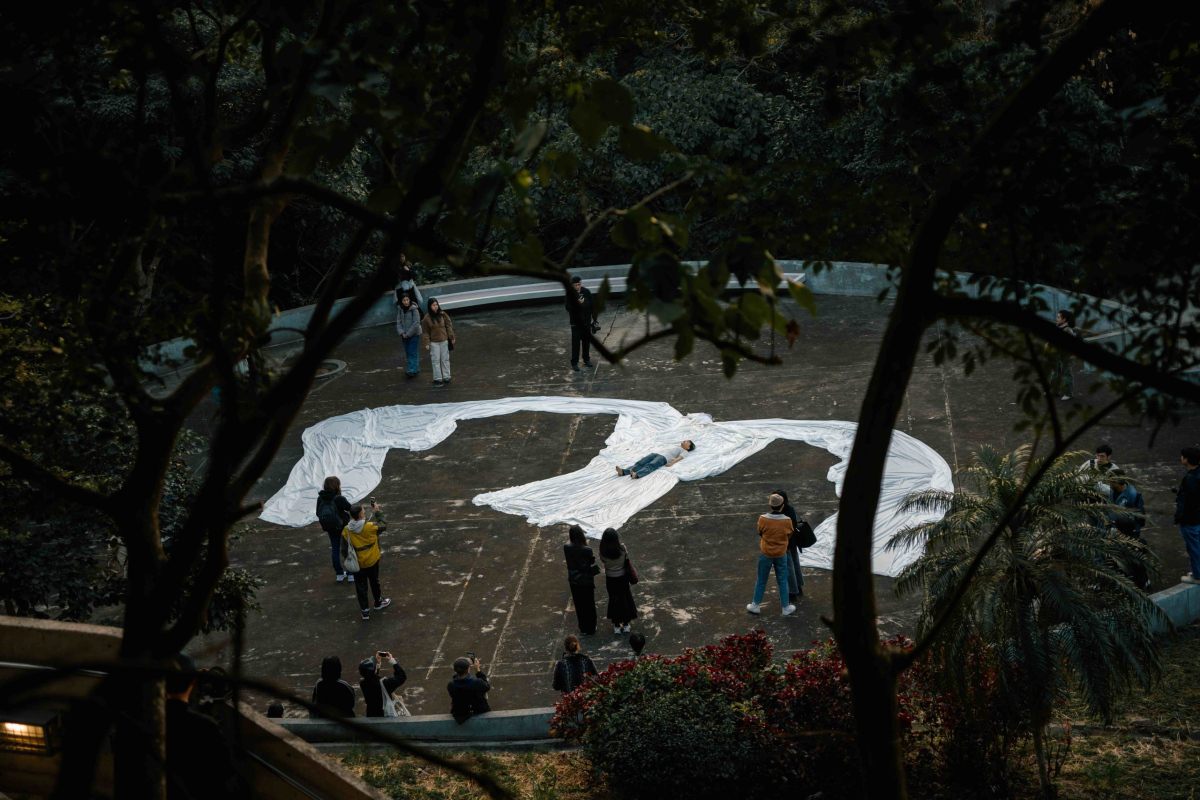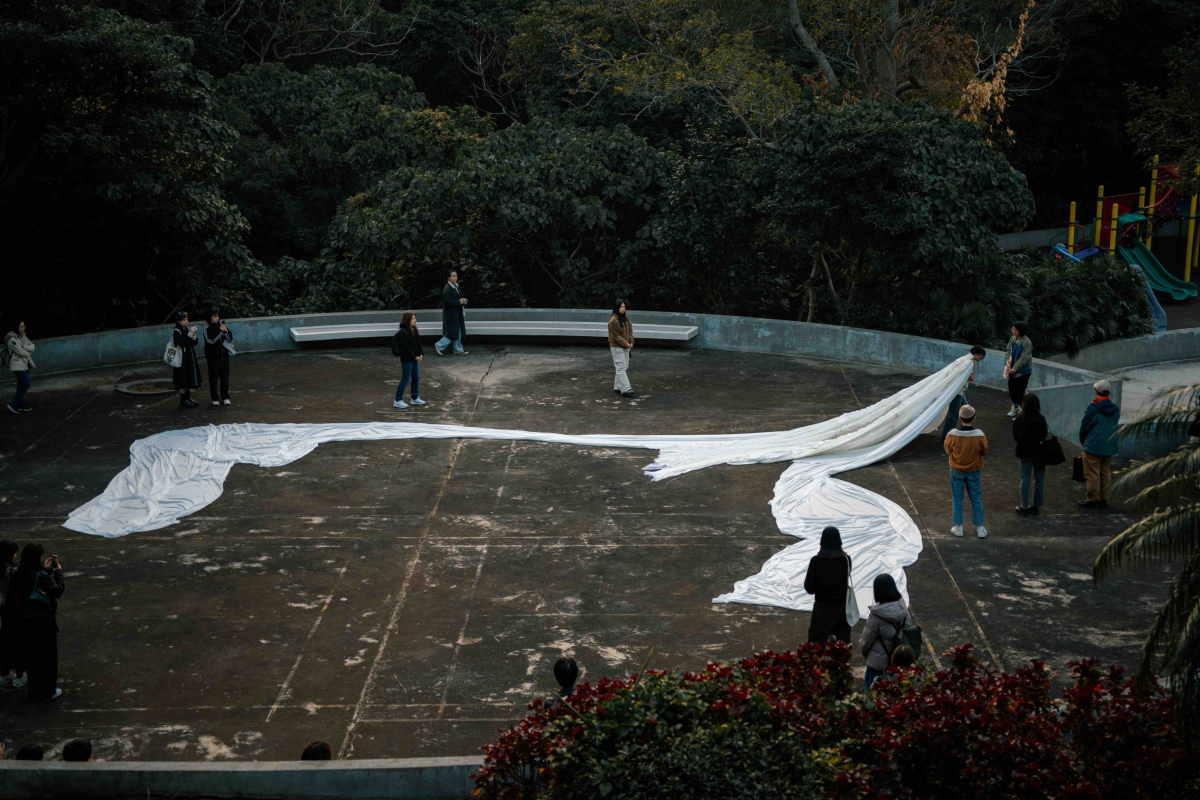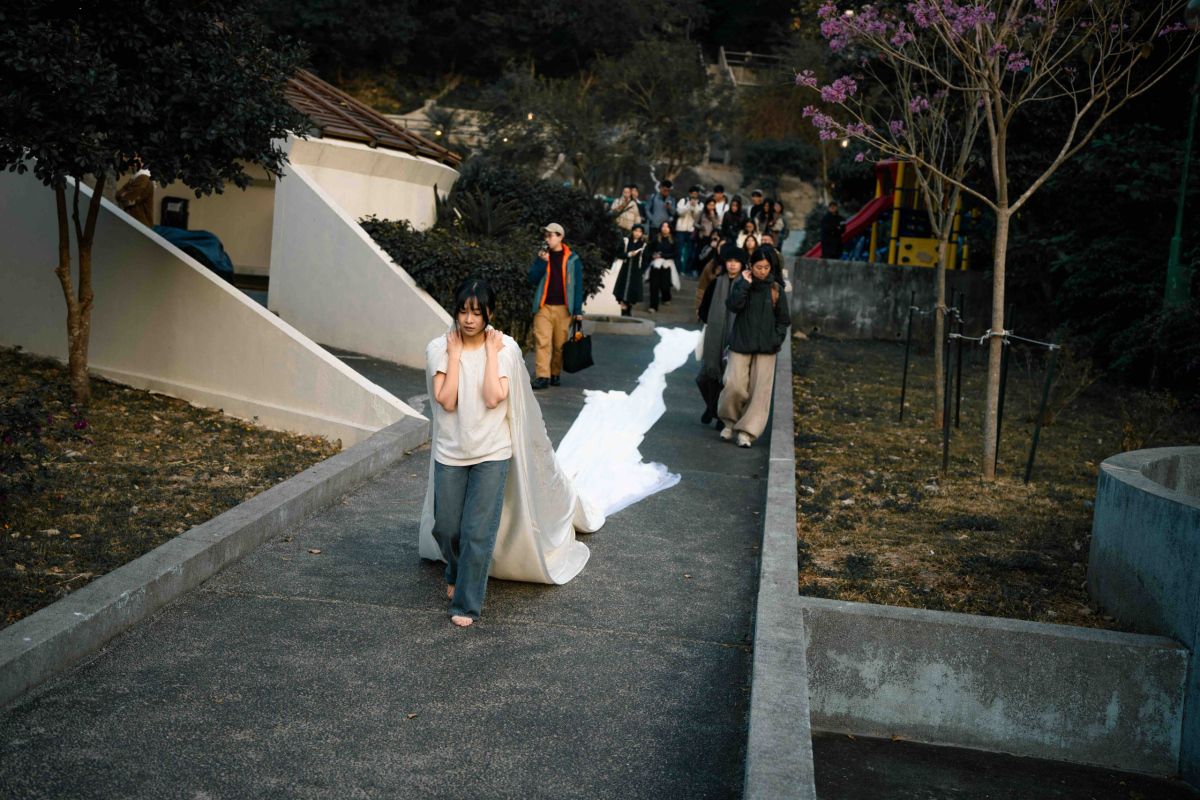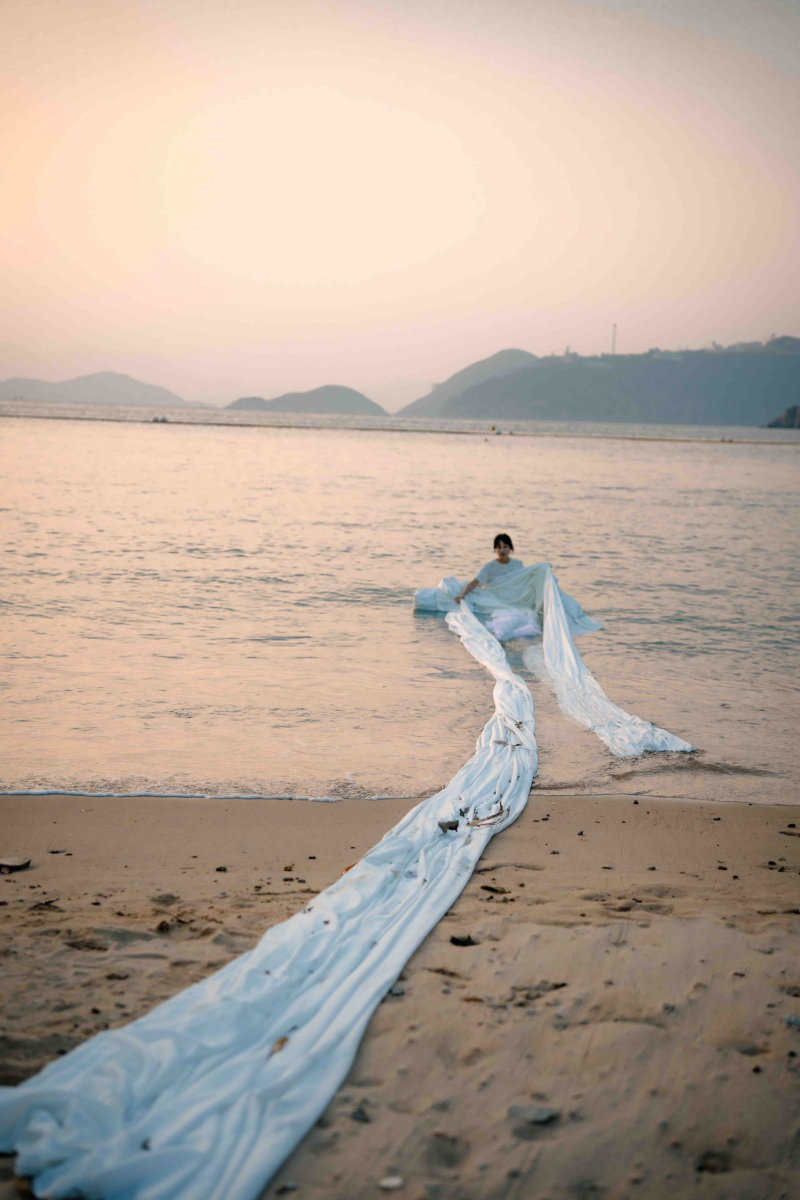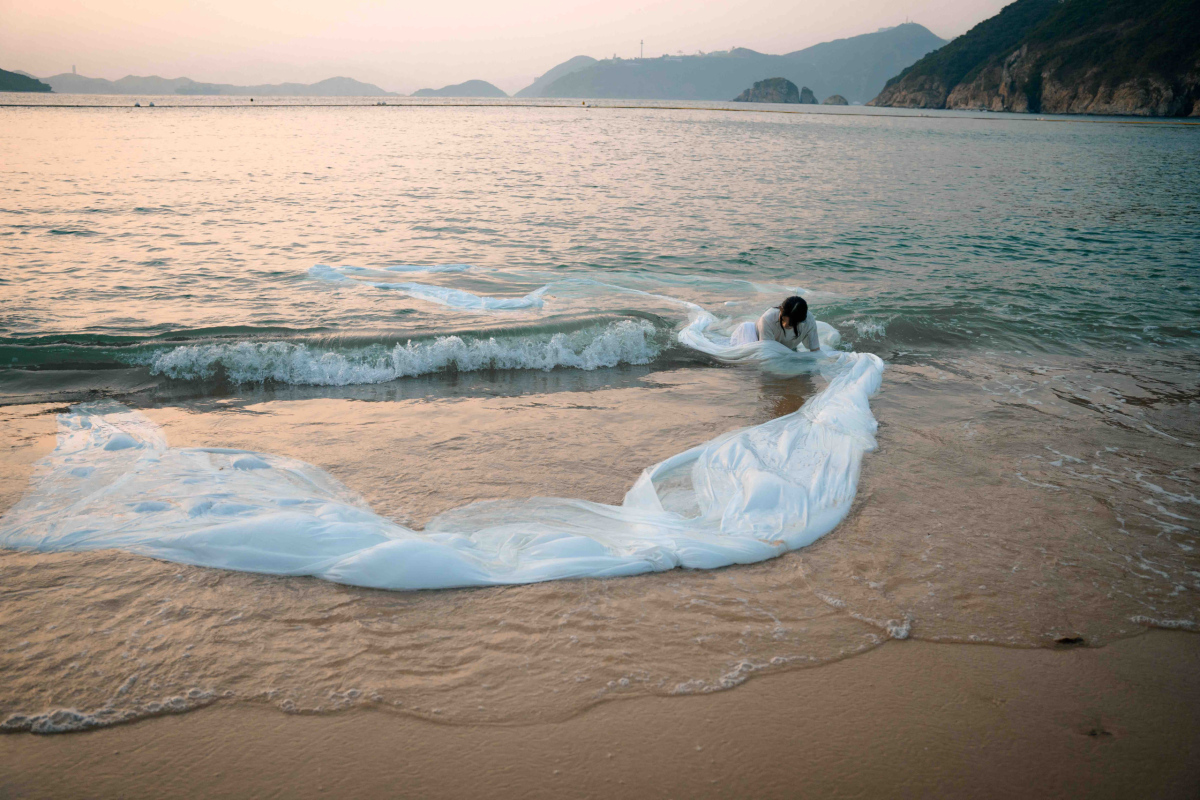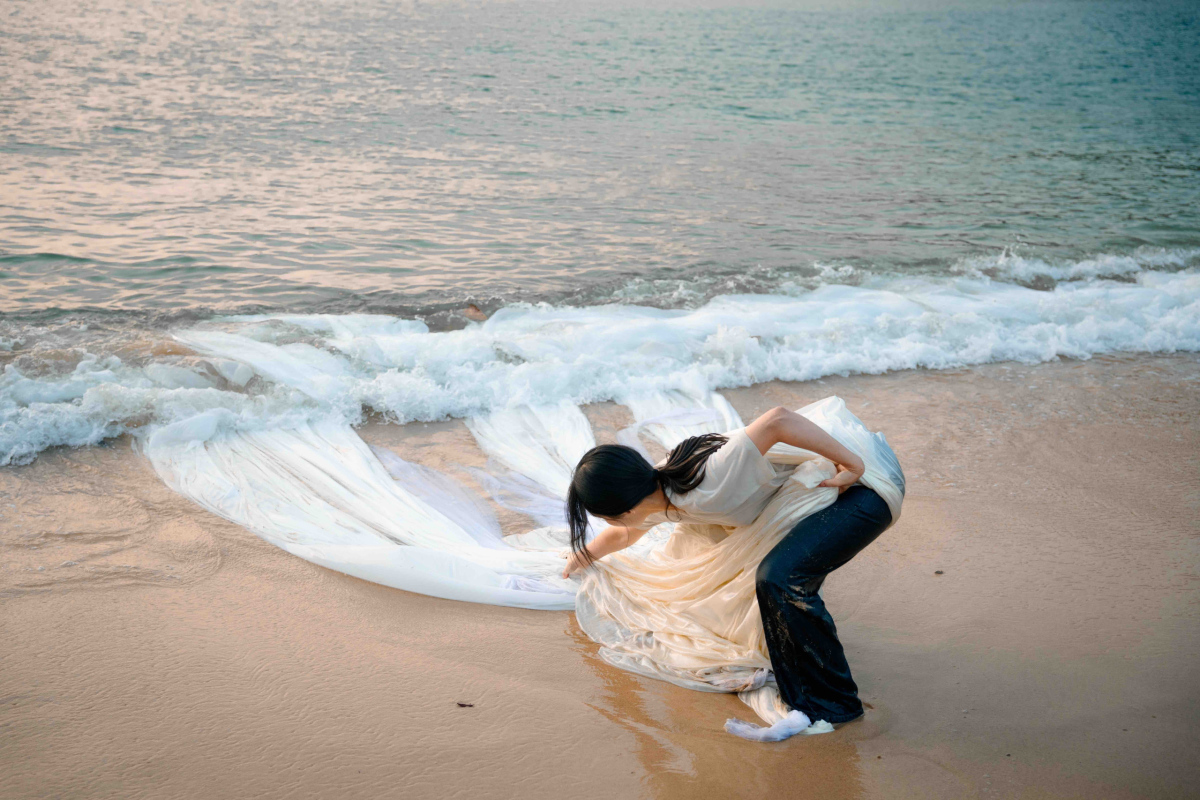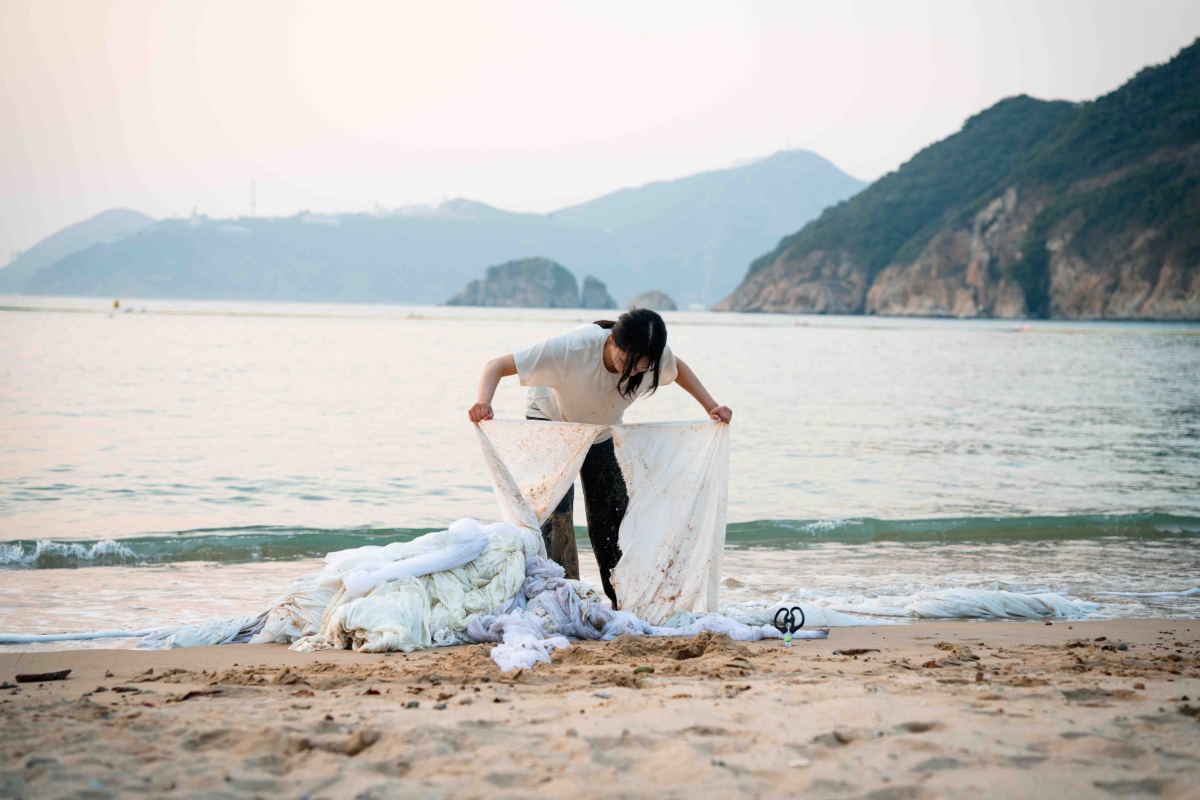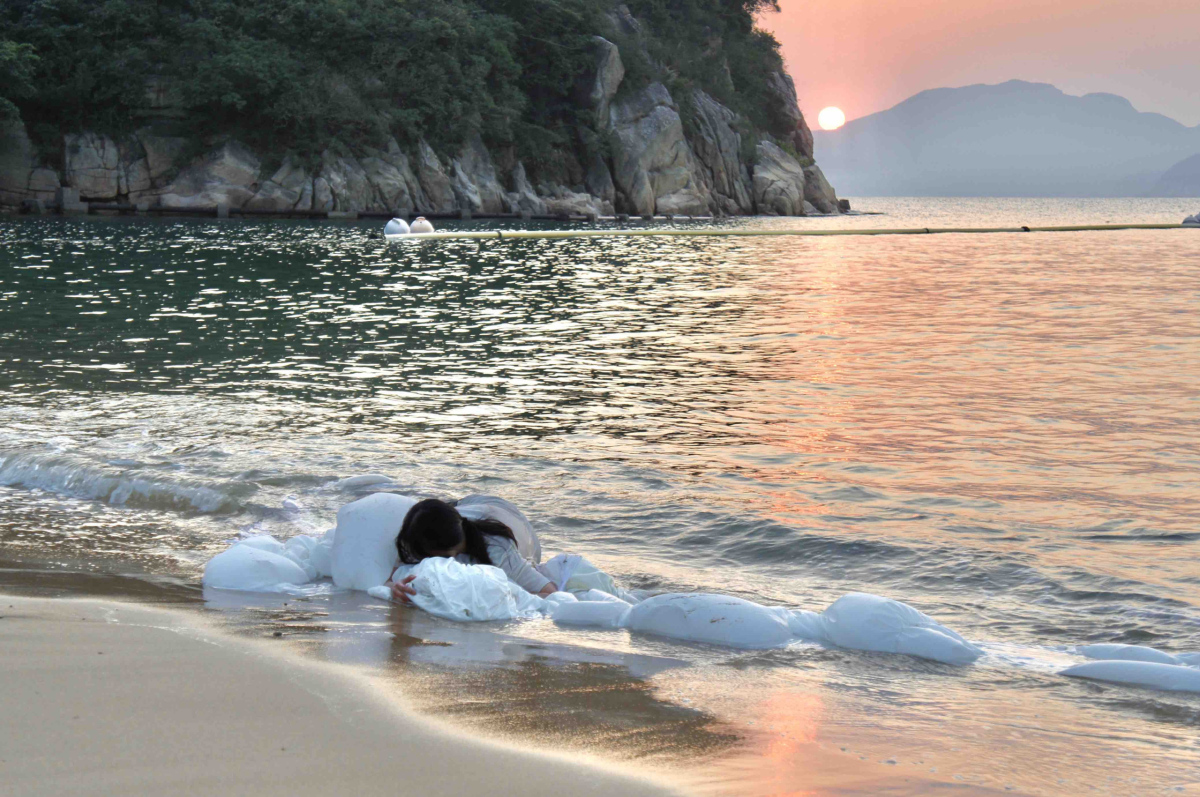-
'Ocean Birth'
11 Jan 2025
Duration: 30 mins
Chung Hom Kok Beach Children’s Playground and Beach, Hong KongAs part of ‘The Embrace and the Passage’, Florence Lam embarked on a journey from a contained space to the boundless ocean, reflecting on fertility, abortion, and host-guest dynamics from within.
Departing from her habitat at Para Site, the artist transitioned to the coast for ‘Ocean Birth’, a continuation of her earlier work ‘Maternal Water’ (2022). Fluid sustains the foetus within the womb but drowns it once detached; it reincarnates through cycles of contamination and purity; and it carries weight yet evaporates. Navigating between land and ocean, Lam manifested the duality of fluid through her body and various materials such as fabric and sand, signalling the possibility of transcendence.
《海誕》
2025年1月11日
舂坎角海灘兒童遊樂場及泳灘在展覽「棲與渡」中,Florence Lam踏上由幽室轉移至無垠大海的軌跡,藉此思量生育、墮胎的經歷以及由內而生的主客關係。
在Para Site裏棲息過後,藝術家引領觀眾到達海岸,呈現《海誕》——其2022年作品《母水》的延續。水在子宮內維繫胎兒生命,但又能將人溺斃;它在沾染與純淨的循環中轉世;沉重無比卻又會蒸發如煙。藝術家游移於陸地與大海之間,以身體及不同物質,包括布料與沙,展現水的二元,同時忖度超越的可能。
Curated by Jessie Kwok
Commissioned by Para Site, Hong KongPhotos by Vivian Wong and Catherine Li
